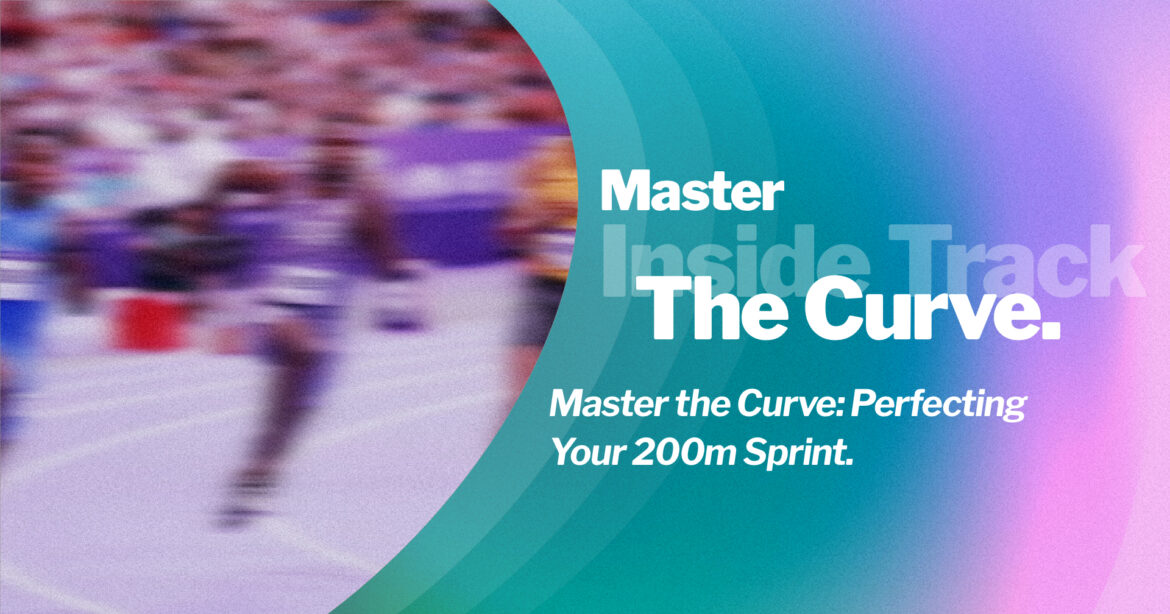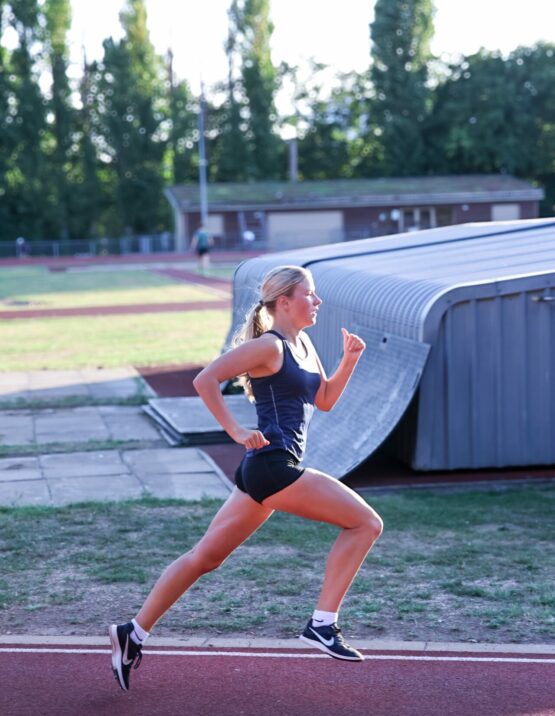Story By Bjorn Jansen
The 200m sprint is more than just raw speed; it blends power, precision, and efficiency. Unlike the 100m, where you run in a straight line, the 200m demands mastery of the curve. The ability to maintain speed while navigating the bend is what separates good sprinters from great ones.
World champion Noah Lyles, one of the fastest curve runners in history, has repeatedly emphasised the importance of body positioning, controlled aggression, and relaxation when attacking the turn. At SpeedPro, we break down the essential techniques to help you dominate the curve and maximise your performance.
Why the 200m Curve Matters
The curve accounts for half of your 200-meter race. Run it well and set yourself up for a strong finish. Run it poorly, and you'll lose momentum before the home straight. The goal is to accelerate efficiently while maintaining control and rhythm, ensuring you exit the bend with maximum speed and minimal energy loss.
1. Body Positioning: Middle of the Lane and Drive
Noah Lyles often emphasises the importance of the drive phase in the first 20m and how positioning yourself in the middle of the lane improves efficiency on the curve. Running too close to the inside line can cause you to lose balance while drifting wide forces extra movement that slows you down, and you are running further than your competitors.
Key Technique:
- From the start, focus on keeping your body centred in the middle of the lane.
- Drive aggressively over the first 20m, maintaining a forward lean as you accelerate.
- Around 30m, transition into a tall sprinting posture, staying controlled through the curve, keeping in the middle of the lane.
- Avoid unnecessary side-to-side movement, which disrupts rhythm and reduces speed.
Drill to Improve:
- Curve Runs (4 x 120m) – Focus on running consistently in the middle of the lane, maintaining efficient stride length and mechanics throughout the turn.
2. Hip Placement and Stride Mechanics
Hip placement is crucial for maintaining speed through the curve. Noah Lyles emphasises the importance of adjusting your hips from around 60m to parallel to the track, allowing you to carry momentum efficiently into the straight. This subtle adjustment prevents unnecessary tension and ensures a smooth transition.
Key Techniques:
- Avoid leaning excessively into the bend; instead, focus on aligning your hips parallel to the track while keeping your position in the middle of the lane.
- At the 80m mark, more force is applied to the ground to prepare for a powerful exit from the curve.
- Keep your stride length consistent; overstriding can cause a loss of balance and disrupt momentum.
Drill to Improve:
- Lane Runs (3 x 150m in lane 3 or 4): Focus on running in the middle of the lane while maintaining controlled hip positioning and speed.
- Use cones along the lane's centre to reinforce proper hip alignment throughout the curve.
3. Upper Body Relaxation and Arm Action
Many sprinters tense up on the curve, but Noah Lyles is known for his effortless, fluid movement. The key is staying relaxed while maintaining power, allowing smooth acceleration without unnecessary tension.
Key Techniques:
- Keep your arms driving naturally and close to your body without crossing over.
- Relax your shoulders; tension slows you down and disrupts fluid movement.
- Avoid exaggerated arm movements, as overcompensation can reduce your rhythm and efficiency.
Drill to Improve:
- Curve Acceleration Drills (4 x 60m): Focus on maintaining powerful yet relaxed arm swings while driving through the bend, reinforcing efficient movement under speed.
4. Transitioning to the Straight
How you exit the bend is crucial to maintaining speed into the final 100m. Noah Lyles emphasises a smooth, controlled transition, gradually opening his stride to avoid any loss of momentum. A rushed or abrupt shift can disrupt your rhythm and slow you down.
Key Techniques:
- Stay patient—don't force a sudden change in posture. Let the transition happen naturally.
- Maintain a controlled, relaxed rhythm to carry speed efficiently onto the straight.
- Keep driving forward with power while staying relaxed, ensuring smooth mechanics.
- The last 20m is where races are won or lost—hold your form and stay composed.
Drill to Improve:
- 200m Split Runs (3 x 150m at race pace, followed by 50m relaxed sprint): This drill simulates race conditions, reinforcing an efficient curve-to-straight transition and helping you sustain speed to the finish.
Final Thoughts
Perfecting your curve technique is essential for any 200m sprinter. By adjusting your hip positioning, refining stride mechanics, staying relaxed, and executing a seamless transition onto the straight, you'll carry maximum speed through the bend and set yourself up for a strong finish.
At SpeedPro, we emphasise the small details that make a big difference. Train with precision, master the curve, and unlock your full potential over 200m.




